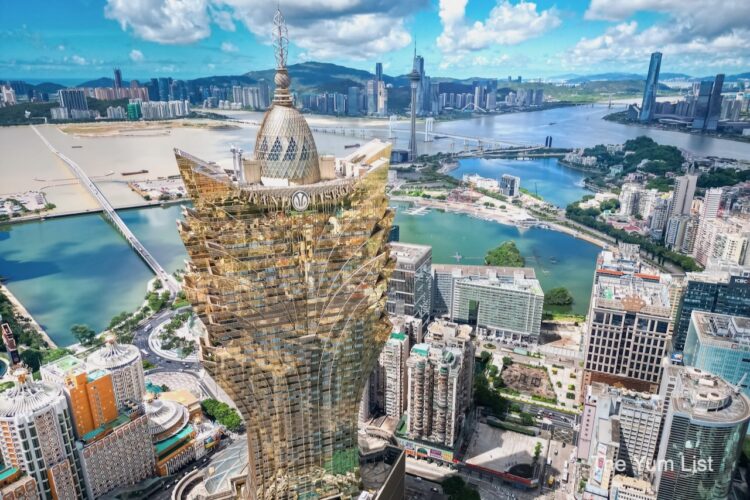Macau Travel Tips – See, Eat, Stay
Words: Monica Tindall
Photos: Han Sen Hau
Macau is a spectacular fusion of tradition, culture, and tailor-made luxury and an easy getaway from just about anywhere in Southeast Asia. Once a quaint Portuguese enclave, today’s Macau stands as a shining beacon of opulence and cultural harmony, skillfully blending its colonial past with ultra-modern living. Whether you’re drawn by the allure of lavish hotels, sumptuous dining, or architectural marvels, Macau offers a variety of experiences that promise to enchant and excite. We hope our travel tips help you craft an enjoyable experience.
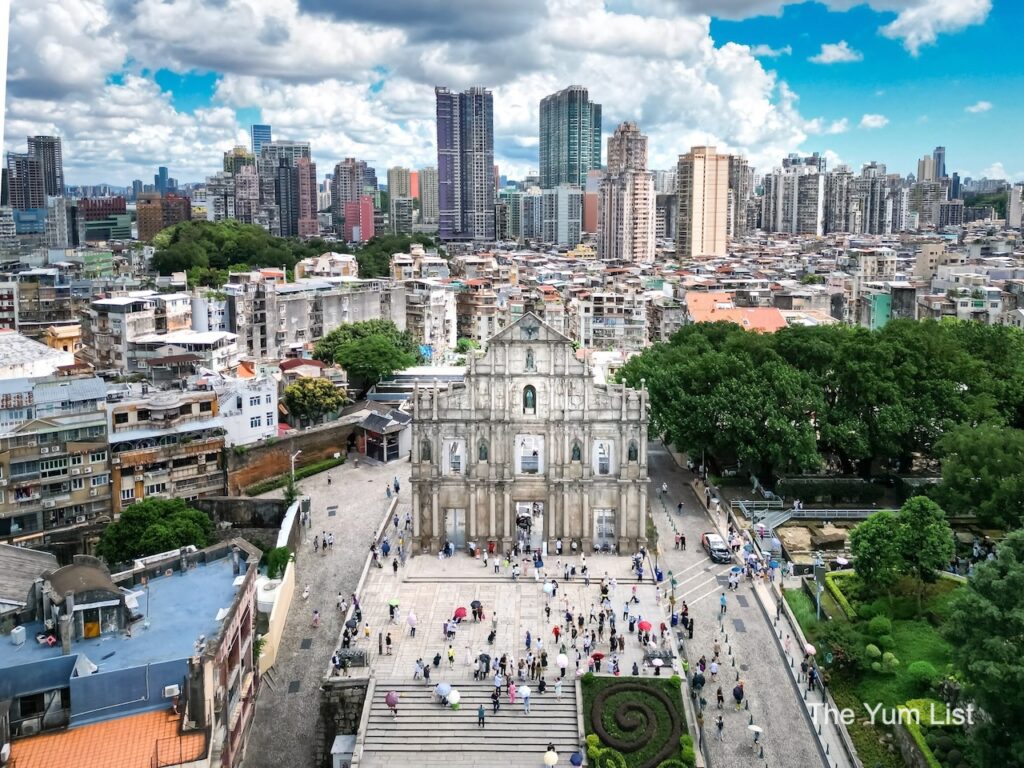
Macau Travel Tips – See, Eat, Stay
Getting to Macau from Kuala Lumpur
Travelling from Kuala Lumpur to Macau couldn’t be easier for those looking to indulge in a luxurious getaway. A direct flight spans just about four hours, meaning you can leave Malaysia in the morning and be sipping a cocktail in Macau by the afternoon. This quick travel time makes Macau an appealing weekend retreat or a long holiday destination alike for those departing from Kuala Lumpur.
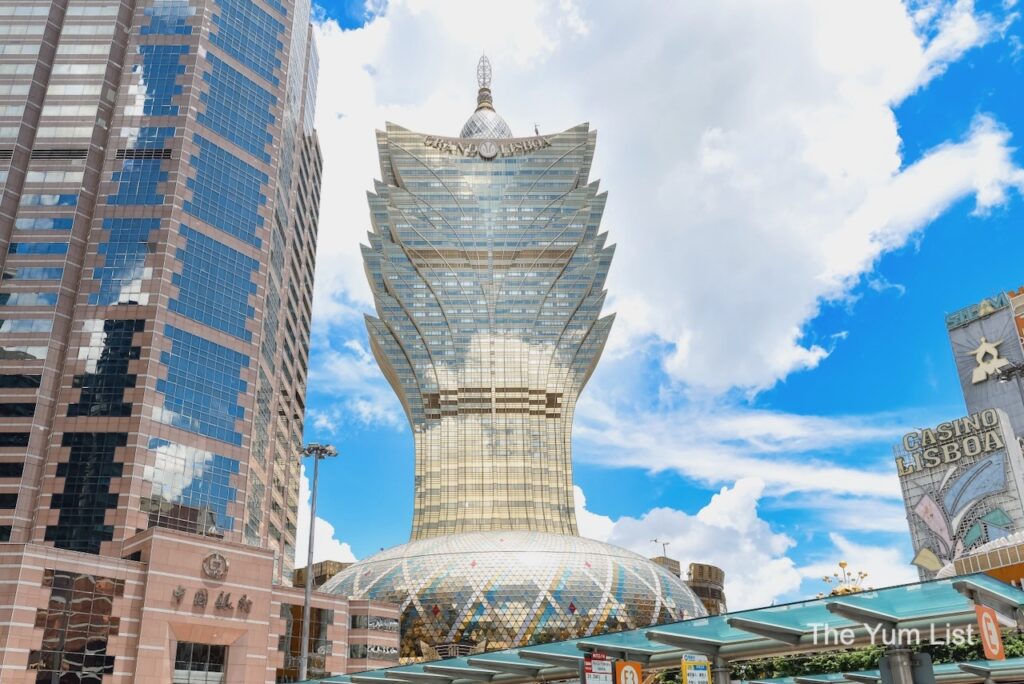
Customs and Immigration
Upon your arrival in Macau, you’ll find that moving through customs and immigration is typically straightforward and efficient. Macau is well-equipped to handle a high volume of international travellers, ensuring that your entry into the city is as smooth as possible. (Cool fact: our guide told us that Macau’s population is just under 700k, yet visitors can reach up to 30 million in peak tourism years!) Clear signage and personal assistance throughout the immigration area facilitate a stress-free process for first-time and returning visitors alike. We were through in less than 10 minutes.
Residents from many countries can enter Macau without a visa, or they can secure one upon arrival with minimal hassle. This accessibility makes it easier for travellers to decide on a spontaneous luxury trip without the need for extensive pre-planning related to visa arrangements. Check the latest entry requirements specific to your country before travelling to ensure a seamless start. Our travel group held Australian, Malaysian and Taiwanese passports, and we were all granted a 30-day stay.
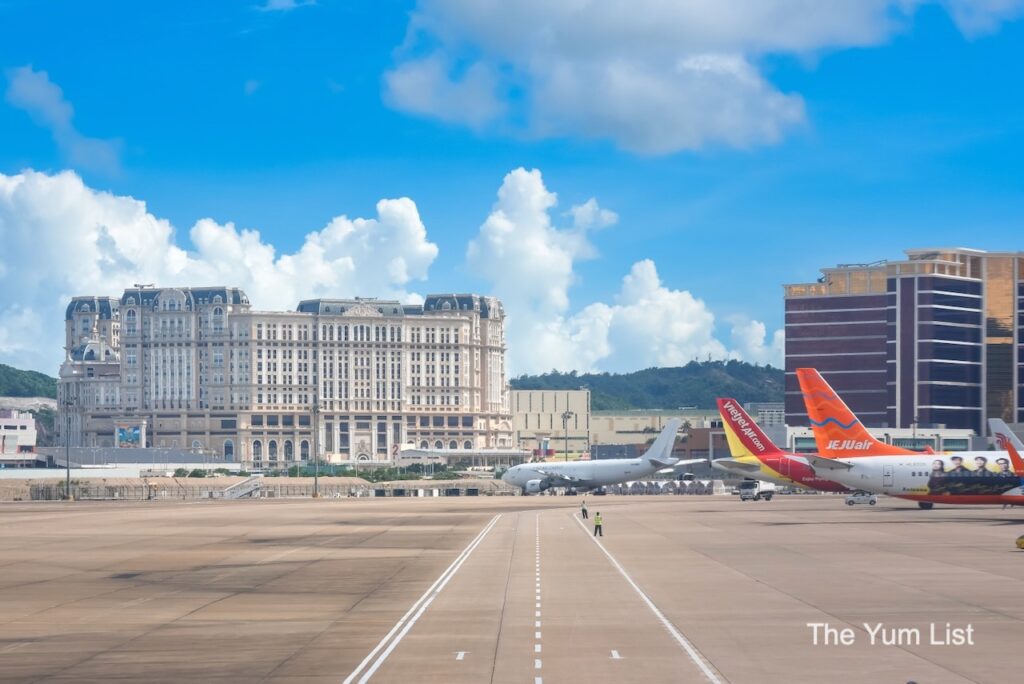
Best Time to Visit
Macau’s weather is an agreeable bonus for visitors, having a subtropical climate that makes it a wonderful destination at any time of the year. The temperatures are generally pleasant, allowing you to enjoy both the bustling city atmosphere and the serene outdoors without the discomfort of extreme weather conditions. Summer, of course, is a little warmer (around 30 degrees Celsius on our trip), and winter gets down to around 15 degrees at night. This makes Macau ideal for those looking to escape harsh winters or overly hot summers found elsewhere.
The ideal time to visit depends on preferences. If you prefer exploring heritage sites and leisurely strolls through vibrant streets under clear blue skies, plan your visit during the dry season from October to May. This period is marked by less rainfall and a cooler climate, perfect for outdoor activities and taking in historical sites without the interruption of rain.
On the other hand, if you enjoy soaking up local culture through festivals and lively events, the summer months from June to September are ideal. Although this time is hotter and more humid, it’s also when the islands come alive with colourful events and celebrations, such as the Lotus Flower Festival and Dragon Boat Festival. Hotels also put on a show for families in the summer, catering to children of all ages, such as the Moomin Wonderful Encounter at Grand Lisboa Palace Resort Macau, where fans of the cute character by Swedish-Finn illustrator and writer Tove Jansson can explore the Moominverse. These months are buzzing with energy and offer a unique insight into the traditions and festivities celebrated by the local communities, as well as pop culture.

Local Currency and Money
When visiting Macau, it’s useful to know that while the official currency is the Macanese pataca (MOP), the Hong Kong dollar (HKD) and Chinese renminbi (RMB) are widely accepted in almost all businesses, shops, and restaurants. This threefold currency system makes transactions smooth for travellers, especially those coming from or travelling through Hong Kong. However, note that while exchange rates may increase or decrease, most businesses offer a one-for-one exchange, meaning that if you decide to use HKD or RMB, you may lose out a little.
For those who prefer the convenience of plastic, Macau does not disappoint. Major credit cards such as Visa and Mastercard are accepted in most hotels, upscale restaurants, boutiques, and even many street vendors. For example, we had no problem using credit cards for even a single egg tart from multiple street vendors on our food trails. This accessibility allows for a seamless shopping and dining experience. Additionally, we saw ATMs everywhere! Just remember to activate your Malaysian debit cards for overseas use before travel.
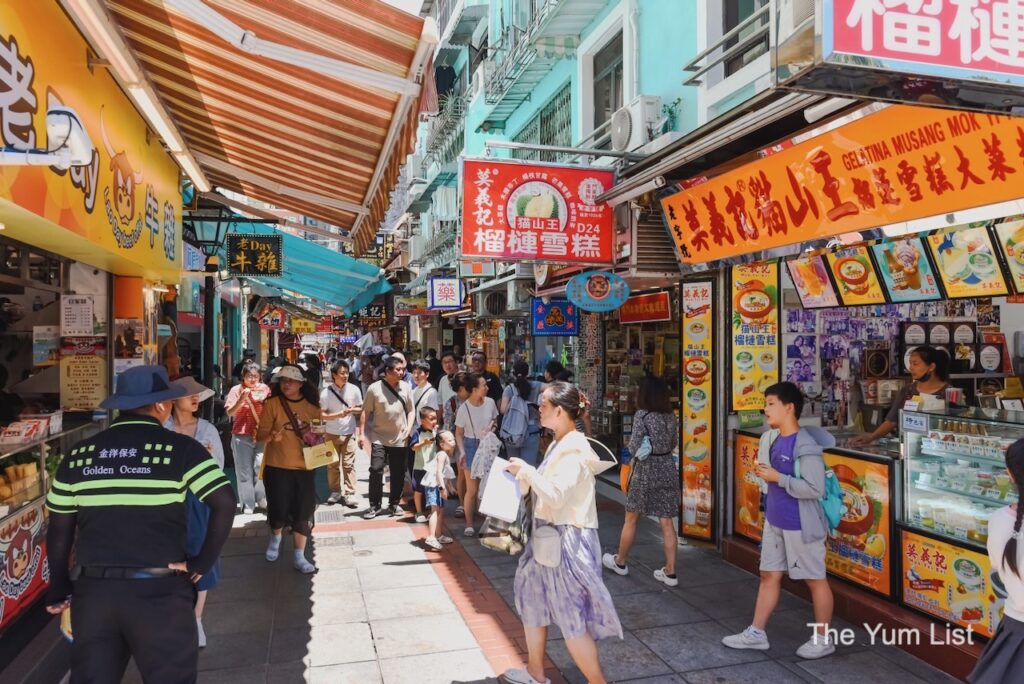
Getting Around
Exploring Macau by foot is an enjoyable endeavour, particularly in the historic centre. This UNESCO World Heritage site offers a close-up view of the blend of Chinese and Portuguese architectural styles. The area is pedestrian-friendly and offers numerous photo opportunities, cafes, and shops. In the warmer summer months of June, July, and August, wear sunscreen and a hat, or do as the locals do and carry a sun umbrella.
When walking is not an option, public transportation such as buses is plentiful and can take you across Macau, including Taipa and Coloane. Grab, Uber and Bolt are not currently available, but there are metred taxis (which cost the bomb, compared to what we’ve become spoiled with in ride-hailing apps). Furthermore, most major hotels provide complimentary shuttle bus services, making trips between tourist hotspots, shopping centres, and integrated resorts practically effortless. These buses run frequently and are well-maintained, ensuring a comfortable ride as you explore various attractions. We stayed at the Grand Lisboa Palace, and their shuttle had us at the airport in 10 minutes! They also run regular trips across the island, making getting out and about hassle-free.

What to See
Macau’s rich history is evident in its stunning architecture and historical sites.
Macau’s streets tell tales of its colonial past through their distinctly European architecture juxtaposed with traditional Chinese designs. This mix is visible throughout the city but is especially prominent in the older areas where you can wander through narrow lanes lined with pastel-coloured houses and ancient temples standing in the shadows of towering modern buildings. The presence of historical plaques and museums throughout the area helps bring the storied past to life, providing context and depth to your visit.
The most iconic landmark of Macau, the Ruins of St. Paul’s, consists of the grand stone façade and staircase. It’s all that remains of what was originally the Church of Mater Dei, built between 1602 and 1640. The church was destroyed by fire in 1835. Today, it stands majestically as a symbol of Macau’s cultural heritage and attracts millions of visitors annually.
Just down the side of the Ruins of St. Paul’s is Lover’s Lane, a popular alleyway for photos. Our guide tells us that it was initially named for the love of Jesus Christ, Mother Mary and God but has evolved over time to be a place of fortune for finding new love. Colourful yellow, pink and green pastel walls are accented with decorative Portuguese tiles and pots of summer blooms.
A short distance from here is the Guia Fortress, which includes a fort, chapel, and lighthouse, all perched on the highest point of the peninsula and offering panoramic views of the city. Constructed in the 17th century, the fortress is vital to understanding Macau’s military significance in protecting the city in its earlier days.
Together, these sites offer a glimpse into the city’s history and also provide stunning views and photo opportunities—it’s a thing, apparently, it’s a thing to dress fancy and bring along your own paparazzi.
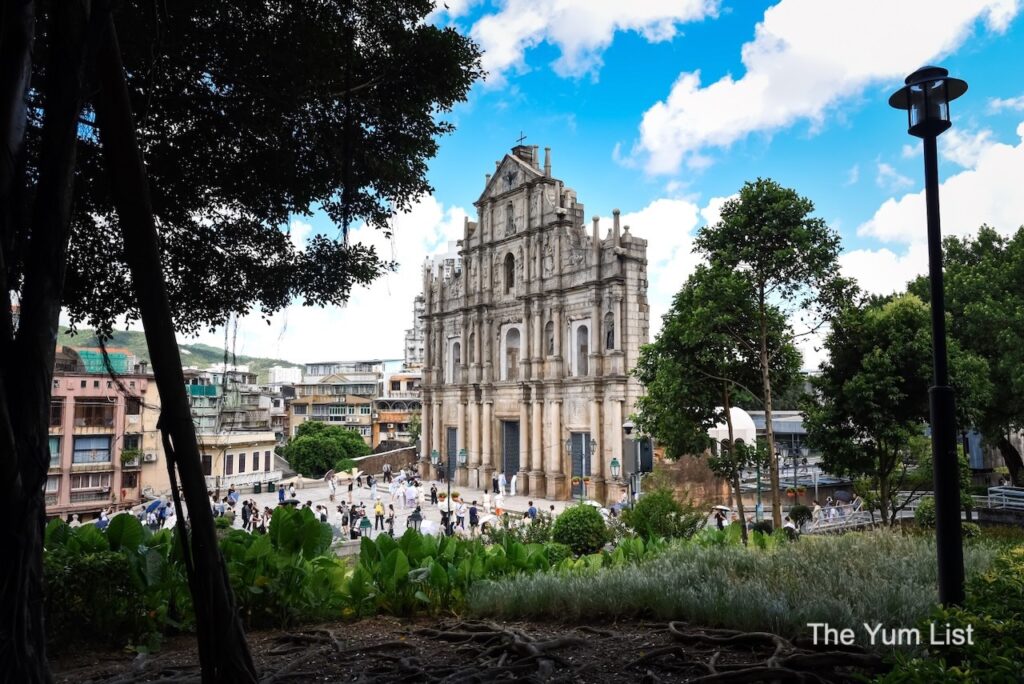
What to Do
From glittering night lights to the serene gardens, Macau has a handful of activities that cater to every taste. The city is a playground of possibilities for those who relish a blend of culture and excitement. Leisurely browse through luxurious shopping centres or experience state-of-the-art entertainment in one of the many lavish theatres around the city. Indulge in a spa day at one of Macau’s upscale hotels or wander through some of the quieter tree-lined suburbs.
For the thrill-seekers, bungee jumping from the Macau Tower is often on the bucket list. At 233 metres, it’s the highest bungee jump in the world. If, like us, you’d prefer to keep your heart in your chest, you can observe and remark on the craziness from afar.
Take a peaceful stroll along Avenida da Republica, a boardwalk shaded by Chinese Banyan trees. From here, you can appreciate a quiet view of Sai Van artificial lake and bridge; sometimes, you can catch sight of bungee jumpers taking a dive off Macau Tower in the distance.

Macau Travel Tips – What to Eat
Macau’s kitchen offers an aromatic blend of influences from China and Portugal, creating a gastronomic paradise. The city’s streets are lined with eateries and vendors serving local delicacies that are rich in flavour and history. Savour dim sum in a beautifully nostalgic Chinese restaurant such as Chalou, or enjoy a Michelin-starred recipe of Portuguese bacalhau (dried and salted cod) with an award-winning chef.
Among the must-try foods in Macau are the famed Portuguese egg tarts. These treats are not to be missed with their flaky crust and creamy custard filling. While sampling extensively, we found our favourites at Lord Stow’s Bakery in Taipa Village. On the same street are a host of other bites, such as aromatic braised meats, pork chop buns, bakkwa (salted dried meats) and ice cream, particularly popular in the heat of summer. Almond cookies from Pastelaria Chui Heong are another must for the sweet tooth. Cooked over charcoal the biscuits have a unique crunchy texture.
For a more refined dining experience, visit Mesa by Jose Avillez, where innovative Portuguese cuisine meets the essence of local produce. Alternatively, Casa Don Alfonso serves a menu that beautifully melds Italian and Mediterranean dishes with the freshest local ingredients. Gourmets are blessed with these European, Michelin-starred kitchens replicated so close to home. Why travel across the world and pay exorbitant prices in Euro when the chefs come to you?



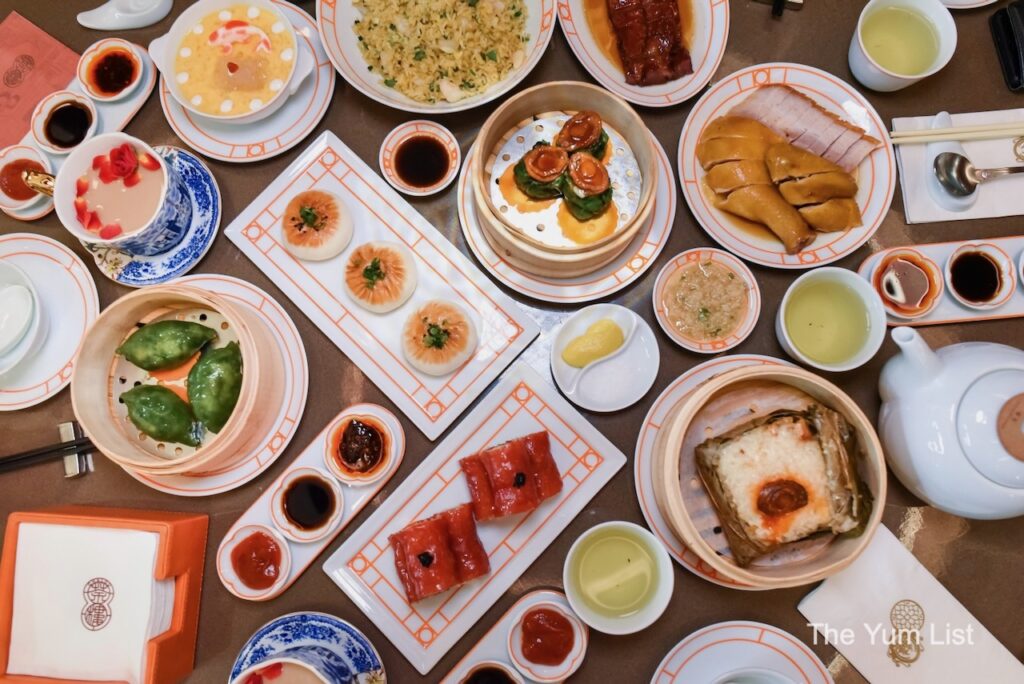
Macau Travel Tips – Where to Stay
Grand Lisboa Palace Resort Macau is one of the newbies on the scene, and we spent five days and four nights there. The integrated resort blends Chinoiserie influences and contemporary Western elegance, with subtle nods to Macau’s maritime heritage woven throughout. Grand, light-filled spaces are adorned with intricate fretwork, delicate porcelain, and pops of nautical blue—a visual composition that celebrates the city’s unique East-meets-West character.
Guests have a choice of three distinct hotel experiences, each offering lavish accommodations and facilities: Palazzo Versace Macau, THE KARL LAGERFELD, and Grand Lisboa Palace Macau.
The Grand Lisboa Palace Macau offers different sizes of rooms and suites, which start at a spacious 60 square metres, decorated with Portuguese and Chinese elements to cater to every whim and fancy. Indulge in a pampering session at The Spa at Grand Lisboa Palace, featuring rejuvenating treatments inspired by Asian and European traditions. Take a dip in the resort’s temperature-controlled indoor or outdoor swimming pools. Get lost in the Jardim Secreto, or take a garden seat and breathe in the greenery for some quiet respite. Alternatively, burn off some of those foodie adventures in the state-of-the-art fitness room, equipped with Technogym cardio and strength machines, a rack of dumbbells, resistance bands and mats, or join one of several daily group fitness classes.
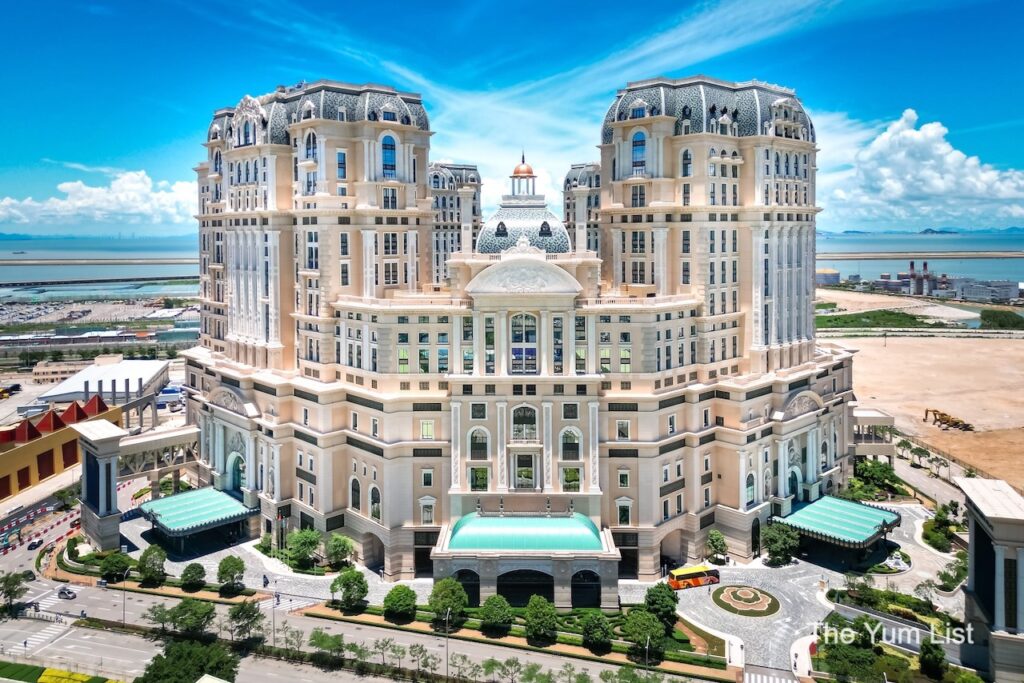
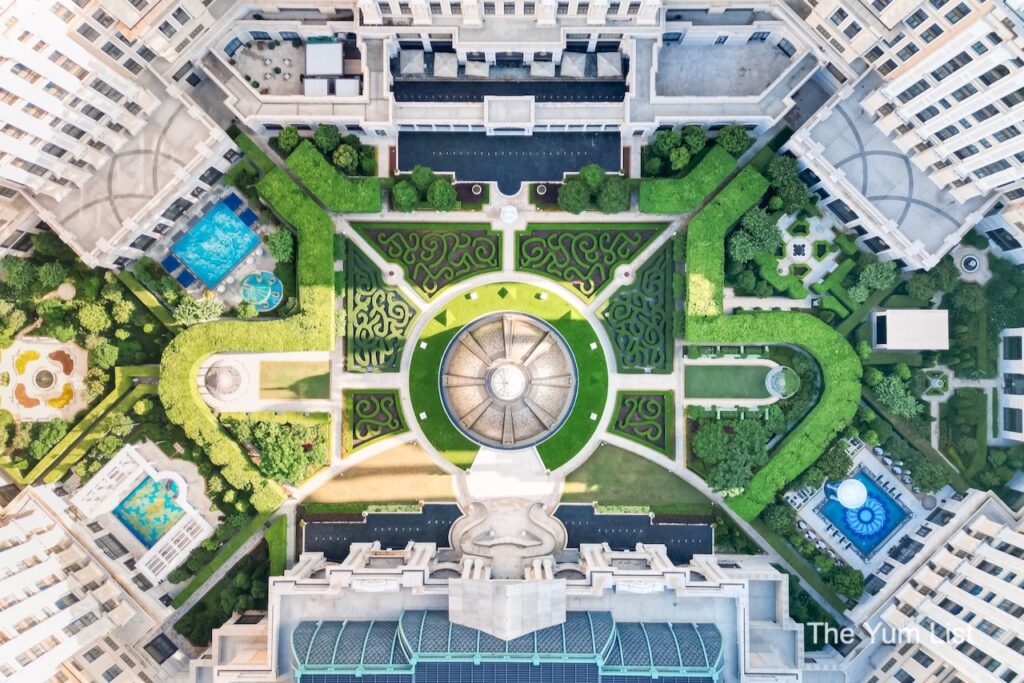
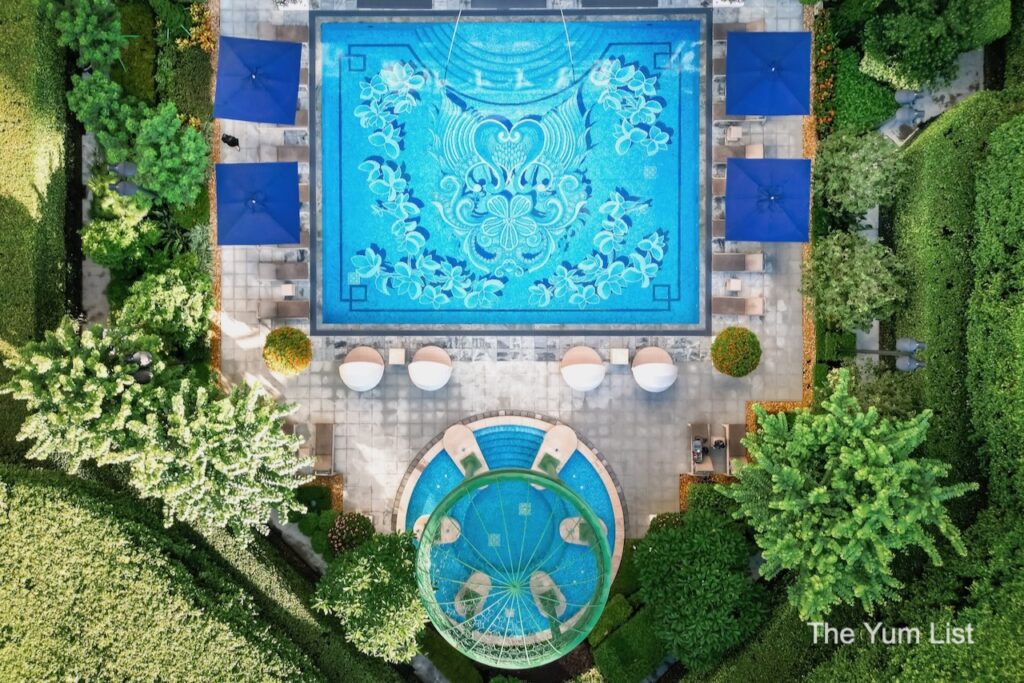
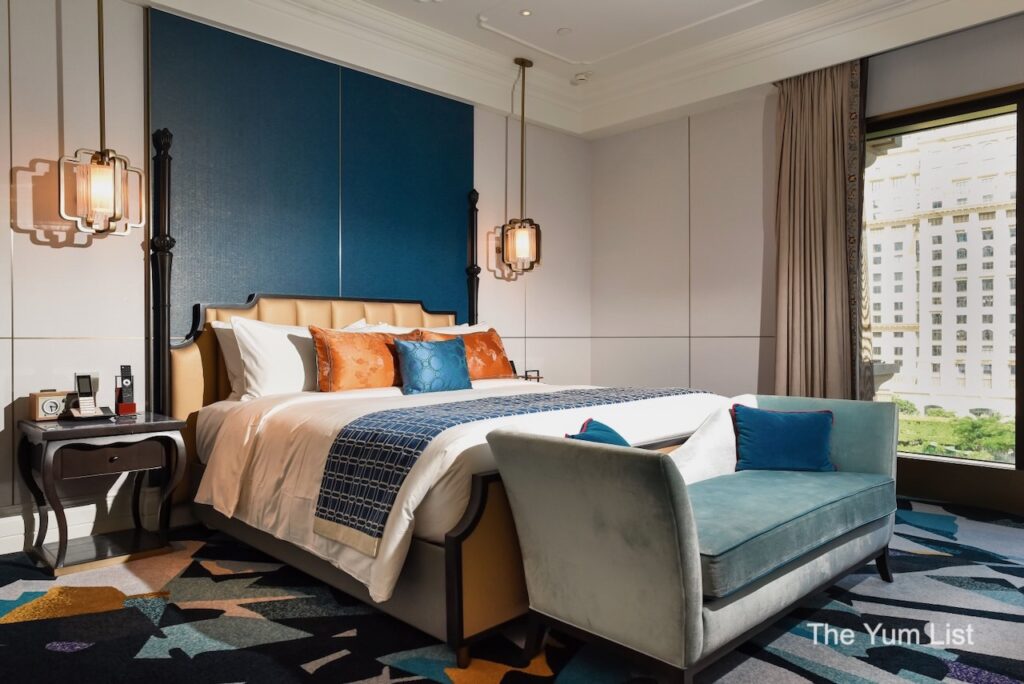
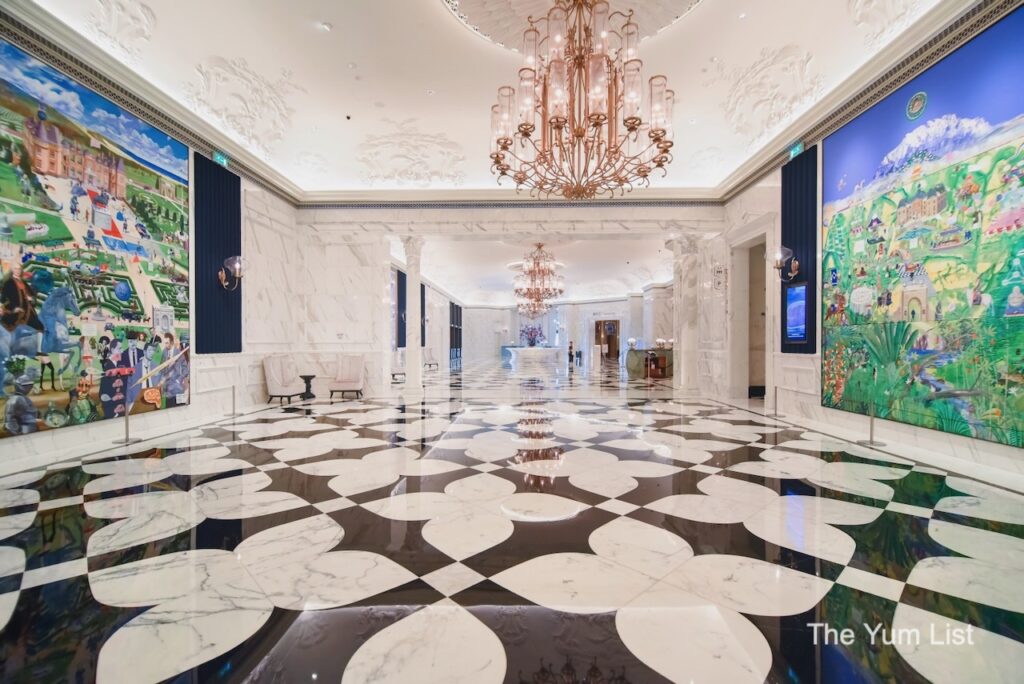
Gastronomy is a definite highlight at Grand Lisboa Palace Resort Macau. With over 16 restaurants and bars, guests have choices spanning the globe. Michelin-starred collaborations abound, with famed chefs curating menus for this location. For a taste of Italy, the vibrant Don Alfonso 1890 Macau promises an extravagant exploration of Southern Italian specialties. Alternatively, embark on a Cantonese yum cha adventure at Chalou, be swept up in the crowd at The Grand Buffet, put on your finest for a fashionista afternoon tea at La Scala del Palazzo or dine on award-winning Portuguese recipes at Mesa by José Avillez.


Macau Travel Tips – See, Eat, Stay
Macau stands out as a dazzling hub for luxury travellers, offering a unique collage of history and modern extravagance. Whether exploring historical sites, street food hopping, fine dining, or enjoying high-end shopping and entertainment, Macau has something for everyone. It marries the charm of old-world Portugal with the vibrant pulse of modern Asia, making it an exciting destination.
Find more travel tips for Macau here and stay updated with the latest gourmet and travel recommendations with The Yum List on Facebook here.

